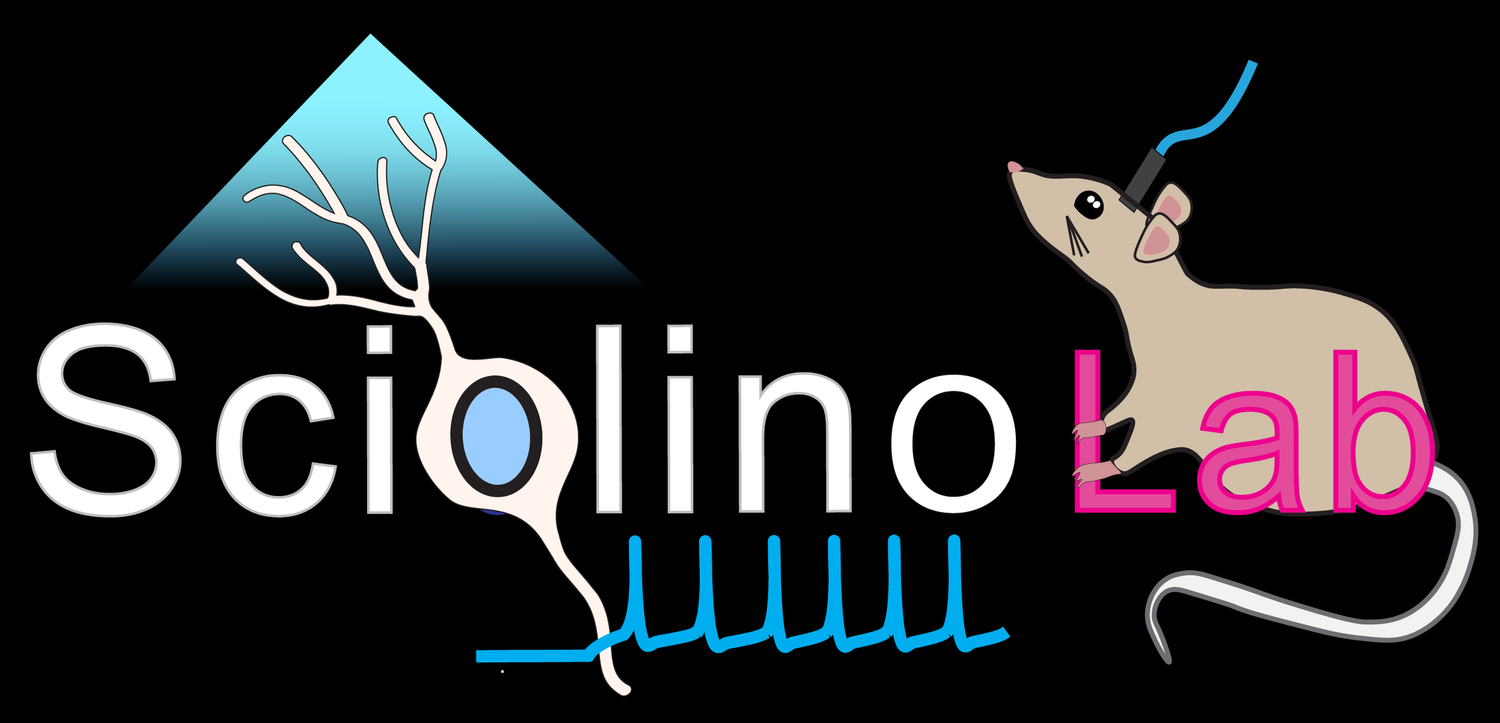Overview of Research Program
Motivated behaviors, including the pursuit of reward and the avoidance of danger, are critical to survival (1, 2, 3). Understanding how animals integrate internal states (hunger, stress, arousal, for example) and sensory inputs to produce various behaviors is a fundamental problem in neuroscience (4). We know that neuromodulators, such as norepinephrine (NE), can regulate activity in parts of the nervous system in a state dependent manner. However, the contribution of hindbrain NE-containing neurons in modulating circuit dynamics and behavior has been largely intractable to full characterization, despite more than 60 years of investigation (5). This gap in knowledge is due, in part, to the diffuse distribution of NE neurons across several small and deep brainstem nuclei (locus coeruleus, sub-coeruleus, A5, A2, A1), making them difficult to access for in vivo studies (6). To overcome this challenge, our lab is using a powerful array of new neuroscience tools, including fiber photometry, miniscope imaging and optogenetics, in combination with behavioral and viral genetic tracing approaches, to understand the connectivity and function of NE circuits in motivated behaviors.
A major source of NE comes from the locus coeruleus (LC), which consists of ~1,500 neurons per brain hemisphere in rodents (or ~16,000 neurons in humans) (7, 8). Despite its small size, LC-NE neurons modulate a variety of physiological and behavioral functions, including attention, aversion, vigilance, and sleep-wake cycle, by changing its activity patterns as a function of behavioral state. For example, salient sensory stimuli increase LC-NE activity to facilitate adaptive behaviors, such as fight-or-flight responses. We recently found that feeding suppresses LC-NE activity in a manner modulated by satiety state (Sciolino et. al., 2022; Science Advances). Current experiments in our lab are focused on using optical neurophysiology approaches to define how LC dynamics encode information about the internal and external environment. Additionally, efforts are ongoing to determine the role of LC-NE pathways in modulating the activity of forebrain areas controlling feeding and threat-related responses, such as the lateral hypothalamus and insular cortex.
Adding more complexity to this matter, LC neurons vary in their genetic lineage, molecular and neurochemical phenotype, activity pattern, anatomical connectivity, and susceptibility to disease (7), suggesting that LC neurons are more diverse than previously appreciated. To investigate how this heterogeneity is linked to diverse functions, our lab uses intersectional genetic strategies for labeling, recording, and manipulating genetically defined or projection-specific LC modules in health and disease states. Being able to understand LC modules will shed light on the intrinsic complexities of brain neuromodulatory systems, which ultimately may help develop better therapies.
